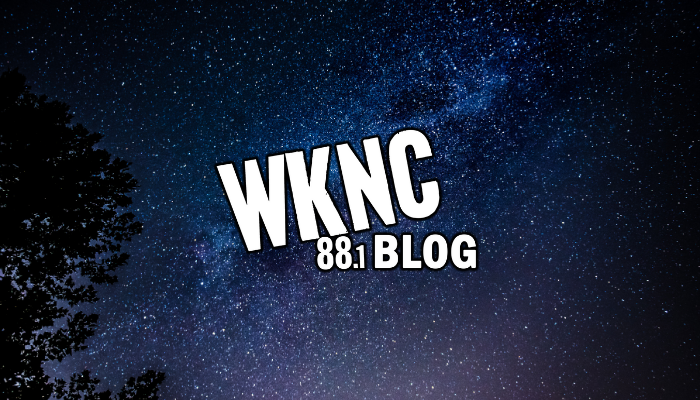Meeting a WKNC DJ can be intimidating. Maybe you’re overcome by our cool presence, stumbling over words and trying to pretend you know what shoegaze means. You’re too nervous to ask us about how we throw together our sets, so you never learn and resolve to assume that the art of crafting a DJ set is beyond you.
This is a common experience, and I’m here to demystify the DJ setmaking process. Note that not all DJs are the same, and this process varies amongst us.
Collection Phase
I play a once-weekly show on HD-1, so every week I’ve got to compile between 15 to 20 songs to put on air. To collect my tracks, I make a playlist after each show to put each new song I’ve liked from the week in one place for my next show.
I’m the sort of person who tends to play just a few songs over and over until they get old and then move on, so sometimes I don’t come up with 15 songs. If this is the case, I’ll scour my old playlists to fill in the cracks.
Occasionally, I’ll have more songs than I need for a set. Because my show is one hour long, I try to have songs that total to a runtime between 53 and 56 minutes. This allows time for voice breaks, and with sets that have songs I’d like to talk about more than the average track, I’ll aim for the lower end of the 53 to 56 minute range.
Proofing Phase
At WKNC, we have a few rules that always need to be followed. One of these rules is that there are certain words we cannot use on air. As such, we’ve got to comb through every lyric of every song we’d like to play on air to make sure our set is squeaky clean.
Of course, this is made much easier with lyric-sharing sites like Genius. However, with songs that don’t have lyrics publicly posted, a thorough listen of the song to be sure of its cleanliness is necessary.
You might be thinking, “Why don’t you just make sure you don’t play any songs with the ‘E’ on them?”, referring to the ‘explicit’ label that many songs have on streaming services. Because we not only follow the FCC standards for Obscene, Indecent and Profane Broadcasts but also our own station standards, there’s no guarantee that an artist has appropriately marked a song as explicit that is qualified as such for our purposes.
If there’s a song you want to play that has explicit lyrics, you have the option to find a clean version of the song or clean it yourself using an audio-editing software.
Set Design
Once all of my songs have been chosen and appropriately cleaned if necessary, I order my playlist to make the set flow. I tend to do a voice break every three songs, so I will typically put 3 similar songs in a block, have a voice break, then repeat. Some DJs may have a voice break between every song or none at all.
A lot of times, I’ll have my set move from slow to fast, soft to heavy, etc. based on the tracks I’m working with. So, it’s attention to the individual songs in their blocks of three, but also attention to how each of those blocks flow and interact with each other.
Okay– at this point, we’ve got our songs, they’re clean and ordered, and we’re nearing the final steps of the DJ’s pre-show process.
At this stage I will occasionally design a poster for my show to promote it and always upload my tracks into Spinitron so that folks can see what they’re listening to during my set.
I’ve made probably over a hundred sets for radio shows before and I find the process to be rather soothing– cultivating a setlist requires more attention be given to the music I listen to than normal casual listening might.
Does this sound interesting to you? Are you dying to know what the prohibited words of radio are? Fear not, there are Fall 2023 interest meetings for students interested in joining WKNC as a DJ or other staff: Tuesday, Aug. 22 and Thursday, Aug. 24 from 6-7 p.m. in 201 Witherspoon.
— bel$

